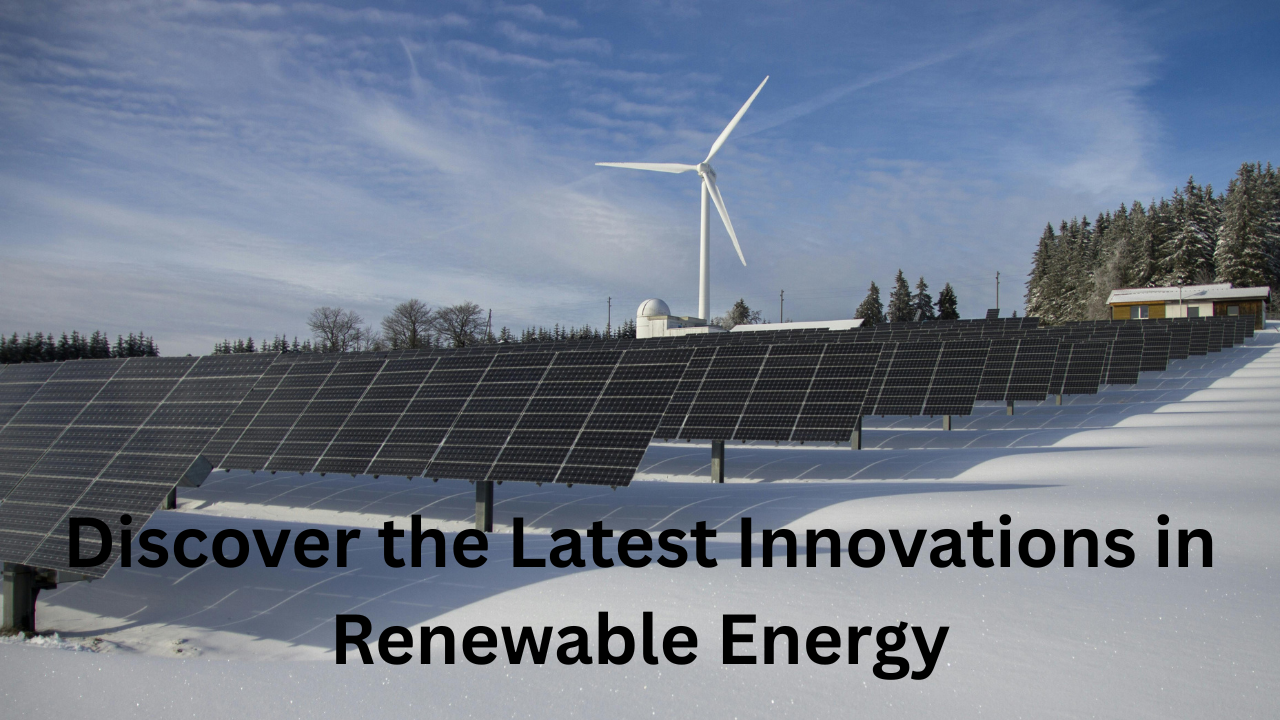Renewable energy lies at the heart of the global energy landscape's profound transformation, driven by an urgent need to combat climate change and secure sustainable energy sources. This sector is experiencing unprecedented growth and innovation. From advancements in solar panels to groundbreaking strides in energy storage, the future of energy is increasingly renewable. This comprehensive overview examines the latest innovations in renewable energy, delving into the cutting-edge technologies that are propelling us toward a cleaner, more sustainable future. Understanding what renewable energy is and how to buy or find its solutions is becoming crucial for individuals, businesses, and governments alike.

What is Renewable Energy?
Renewable energy is defined as energy derived from natural sources that replenish themselves at a higher rate than they are consumed. Solar, wind, water, and geothermal heat are prime examples of these inexhaustible resources. Unlike fossil fuels, which are finite and contribute to greenhouse gas emissions, renewable energy sources offer a clean and sustainable alternative. The escalating climate crisis, coupled with volatile fossil fuel markets, has underscored the critical importance of transitioning to renewable energy. This transition is not merely an environmental necessity but also an economic opportunity, fostering job creation and technological advancement.

4 Renewable Energy Solutions
The latest innovations in renewable energy are diverse, encompassing advancements across various sectors. These breakthroughs are making it more efficient, affordable, and reliable than ever before.
- Solar Energy
- Wind Energy
- Energy Storage
- Geothermal Energy
1. Solar Energy: Beyond Traditional Panel
Solar energy is advancing rapidly beyond traditional panels.
Bifacial solar panels capture sunlight from both sides, increasing energy generation by up to 30%, with high demand for utility-scale projects in 2024.
Perovskite solar cells offer higher efficiency and lower production costs than silicon, excelling at capturing blue light.
Solar trackers automatically adjust panel angles to follow the sun, boosting energy output by up to 25%, even on uneven terrain.
Agrivoltaics combine solar panels with agriculture, optimizing land use.
Finally, solar carports and canopies integrate solar panels into urban spaces, providing clean energy for vehicles and buildings.

2. Wind Energy: Tapping into Offshore Potential
Wind energy continues to be a cornerstone of renewable power, driven by advancements in turbine design and deployment. A key development is:
Floating offshore wind farms, which can be deployed in deeper waters with stronger, more consistent winds, significantly expand potential generation areas.
Furthermore, AI-optimized wind farms are revolutionizing operations by using artificial intelligence to analyze data, forecast energy generation, and optimize turbine placement and performance, leading to increased output and efficiency.

3. Energy Storage: The Key to Grid Stability
In energy storage, advanced battery technologies are evolving beyond lithium-ion, with solid-state and flow batteries offering enhanced safety, higher energy density, and extended lifespans.
Green hydrogen, produced via powered electrolysis, is emerging as a critical decarbonization solution, projected to meet a substantial portion of global energy needs by 2050. For home energy storage, hydrogen fuel cells present a viable alternative to lithium-ion, boasting longer lifespans and greater energy density.
Crucially, grid-scale energy storage, exemplified by systems like Tesla's Megapack and Powerwall, is anticipated to grow eightfold to 80 gigawatts by 2025, playing a vital role in stabilizing grids reliant on renewable energy and displacing fossil fuel peaker plants.

4. Geothermal Energy: Unlocking Earth's Heat
Enhanced Geothermal Systems (EGS) technology taps into previously inaccessible deep heat by creating artificial reservoirs. This innovation significantly expands geothermal energy's reach, with the potential to generate over 100 GW of power in the US alone.

Other Promising Renewable Energy Solutions
- Tidal energy turbines
- Bioenergy with carbon capture and storage
- Tesla's impact
1. Tidal Energy Turbines
Advancements in tidal energy turbine technology are reducing costs and increasing efficiency, enabling energy capture in lower-velocity tidal flows and expanding viable deployment locations.

2. Bioenergy with Carbon Capture and Storage (BECCS)
Bioenergy with Carbon Capture and Storage (BECCS) is a vital innovation that captures and permanently stores carbon dioxide from burning biomass, effectively achieving near-zero carbon footprints and aiding net-zero emission goals.

3. Tesla's Impact on Renewable Energy
Tesla contributes through its energy storage systems like Megapack and Powerwall, which stabilize grids and promote energy independence. They also offer solar power solutions, including the integrated Solar Roof, for distributed generation. Furthermore, Tesla is committed to sustainable manufacturing, aiming for LEED Platinum certification for all Gigafactories by 2028 and 100% renewable energy for manufacturing by 2026. Finally, their highly efficient battery recycling, achieving 92% recovery in 2024, fosters a circular economy technology.
US Renewable Energy Landscape and Adoption Trends
The US sector is experiencing robust growth. In 2024, wind and solar combined generated a record 17% of US electricity, surpassing coal for the first time. Solar generation boomed, rising by 27%, while wind rose by 7%. The US Energy Information Administration (EIA) projects the share of renewable energy in the US electricity mix to increase from 23% in 2024 to 25% in 2025 and 27% in 2026, with solar having the biggest leap.
Several trends are driving the adoption of renewable energy:
- Policy Support: Government policies and financial incentives are crucial for accelerating renewable energy adoption.
- Decreasing Costs: Renewable energy costs, particularly solar and wind, have significantly dropped, boosting competitiveness.
- Community Solar Projects: These initiatives expand renewable energy access to those without on-site installation options.
- Electrification of Energy Demand: The rise of EVs and heat pumps is driving increased demand for clean energy generation.
How to Buy and Find Renewable Energy Solutions
For individuals and businesses looking to embrace sustainable energy, there are several ways to buy and find renewable energy solutions:
- Directly from Power Supplier: Purchase renewable electricity options from your utility company.
- Independent Clean Power Generators: Buy directly from independent producers, especially for large-scale needs.
- Renewable Energy Certificates (RECs): Purchase RECs to offset non-renewable energy consumption and support renewable generation.
- On-site Installations: Generate your sustainable energy by installing solar panels or small wind turbines on your property.
- Community Solar: Subscribe to local solar farms to receive electricity bill credits.
- Energy Audits & Efficiency Upgrades: Reduce overall energy consumption before investing in sustainable energy solutions to maximize impact.
Conclusion
The latest innovations in renewable energy are transforming our world, offering a viable and increasingly affordable path to a sustainable energy future. From advanced solar technology and floating wind farms to groundbreaking energy storage solutions and the pervasive influence of AI, the renewable energy sector is evolving at an unprecedented pace. The future of energy is undoubtedly renewable, powered by continuous innovation and a growing global imperative for sustainability.








